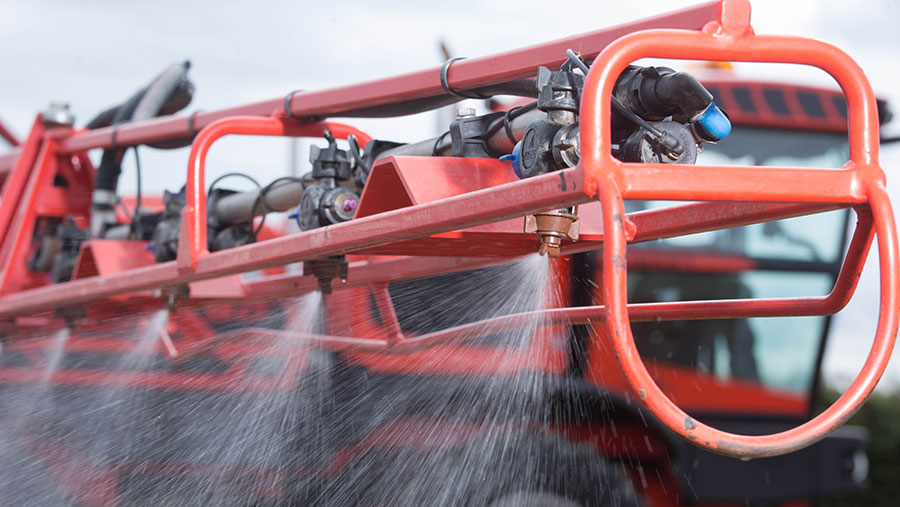Low drift nozzles could help wild oat control in spring
 ©Tim Scrivener
©Tim Scrivener Low drift nozzles could help with wild oat control in the spring by opening up more spraying days at the ideal early timing for herbicide applications.
The optimum time to hit wild oats is while they are small, before they have the chance to compete with the cereal crop, says Syngenta application specialist Scott Cockburn.
However, a wet and windy spring can limit spraying opportunities.
One solution could be coarse spray nozzles, which can be used for spraying in less favourable conditions with less risk of drift.
“The 90% drift reduction nozzles do create more available spray days, which could be crucial to getting the timing right,” he says.
See also: Spring wheat growers gain extra weed killing option
Low drift nozzles have already proved extremely effective in achieving good coverage when desiccating potatoes and have given excellent results in pre-emergence herbicide treatments.
Field testing is now being undertaken to confirm whether the nozzles can also be effective when spraying for wild oats.
This follows successful wind tunnel tests that proved that low drift nozzles can achieve good levels of deposition on small targets.
Results of this season’s spring application trials will give growers and operators guidance for the future.
Current guidance
To target small grass weeds up to crop growth stage 30, the current recommendation is to use the angled 3D nozzle.
Then when the when the crop is larger and penetration is required to hit the target wild oat growing points, sprayer operators are advised to use Amistar nozzles.

